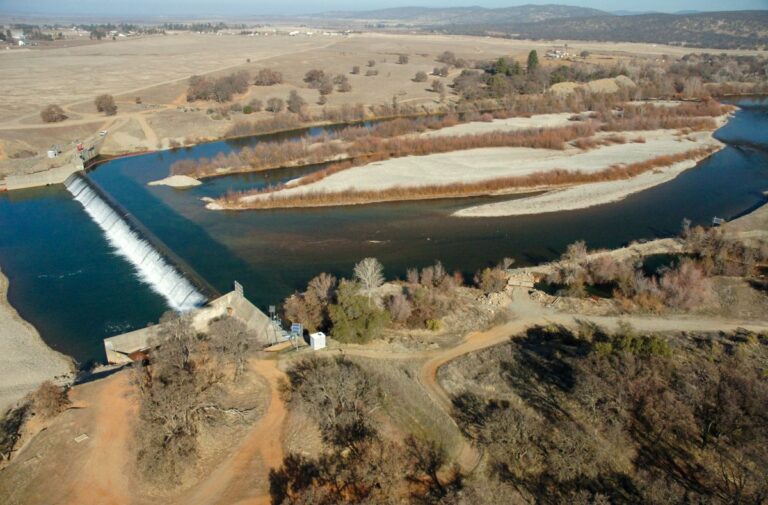Rivers in California once swelled and ebbed as the seasons changed and as wet years gave way to dry ones. Salmon and other now-imperiled aquatic species depended on these historic patterns. But today dams and diversions have altered most of the state’s waterways, leaving their natural flows a mystery.
“Natural flows have been a longstanding question in water management, especially for fish,” says Kirk Klausmeyer, who directs data science for The Nature Conservancy in California. “To restore stream habitats, we need to try and replicate natural flows—but we don’t have the data.”
Only about 10% of California’s rivers have stream gauges. Luckily, though, a few rivers both have gauges and are still essentially free flowing. Data from this handful of rivers can be used to predict the natural flows in altered streams had they been left untouched. But people crunch these numbers quite slowly.
HOW MACHINE LEARNING PREDICTS NATURAL STREAMFLOWS
A type of artificial intelligence called machine learning can predict natural flows much faster―and more accurately. Machine learning sifts through reams of data to find patterns, letting computers solve problems based on experience much as people do.
“That’s what machine learning is good at,” Klausmeyer says. “It can take a clean dataset of natural streamflows and build a model that can expand to all rivers in California.”
The Nature Conservancy partnered with the U.S. Geological Survey and others to make a machine learning model of natural flows in California streams. The team used 90% of the free-flowing stream data to train the model, and the remaining 10% to test its accuracy. “That’s how you check your work,” Klausmeyer says.
A 2017 study he co-authored found that their machine learning model “predicted these actual flows very well,” with a median accuracy of 80%. The team then used the model to create the California Natural Flows Database, an open-access web platform that estimates how much water all the state’s streams and rivers would have had if they were still free flowing.
USING NATURAL FLOWS TO PROTECT AQUATIC SPECIES
Applying the model statewide helped reveal priorities for river protection and restoration. While most California rivers face altered flows, some also still have free-flowing stretches. “It’s very important to protect the watershed upstream and minimize alterations in these places,” Klausmeyer says.
Another set of rivers has natural flows except during the summer growing season, when farmers divert lots of water. These diversions can threaten fish and other aquatic species because many streams already run low during California’s hot, dry summers. “We’re working to shift when farmers take water out,” Klausmeyer says. “They can take water out during the wet season and store it in tanks for the dry season.”
Other users of the California Natural Flows Database include the California Department of Fish and Wildlife’s Instream Flow Program, which determines the flows required to keep conditions healthy for species living in or along waterways. This can inform how […]
Full article: mavensnotebook.com

